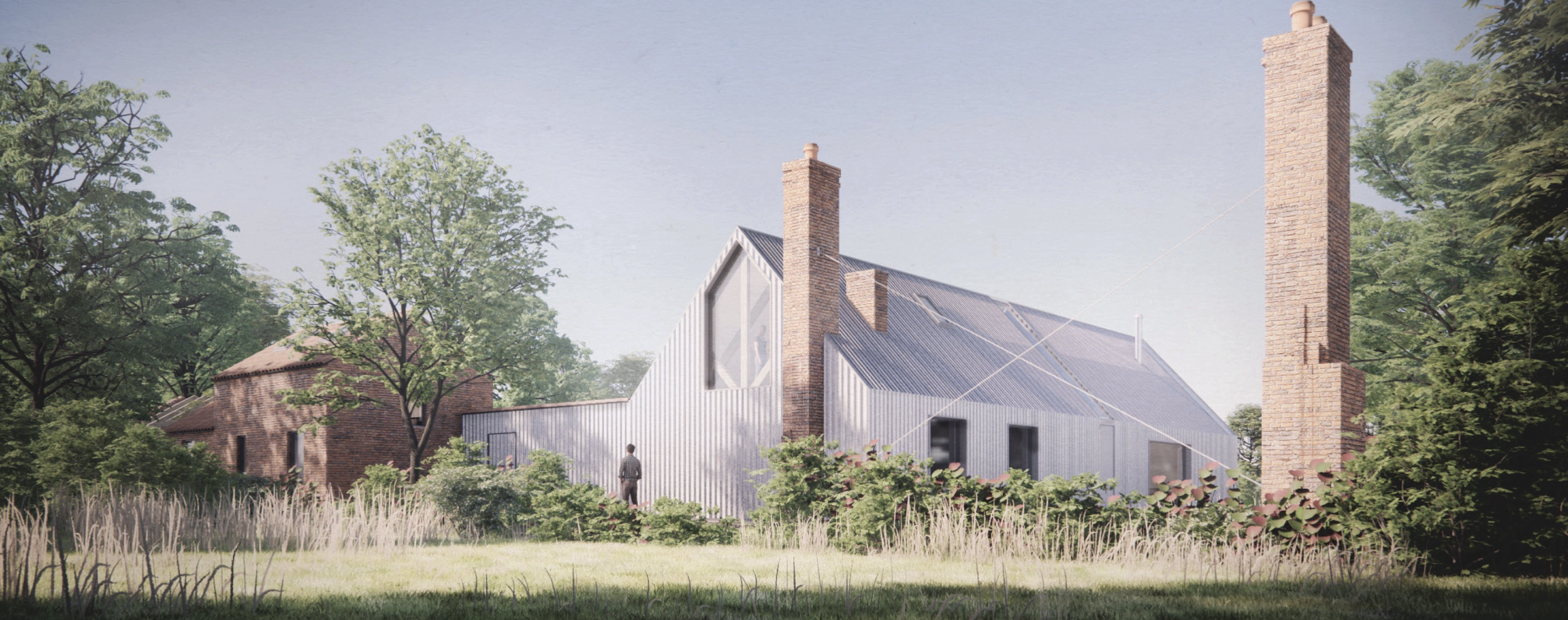My DOMtips: How to build a sustainable home
Figuring out the best placement for the doors and windows is important in any scheme
Sustainability isn't just a buzzword, or at least it shouldn’t be. In a world where companies use carefully crafted marketing strategies to greenwash their projects, it’s become incredibly difficult to know whether we’re making the right decisions. However, we can start by making the correct lifestyle choices, and those begin at home.
It’s all about intention, not about perfection. Many of the choices that make a home more environmentally responsible also make it more comfortable, energy-efficient and future-proof. Whether you're building from the ground up or simply looking to make small but meaningful adaptations, here are our top tips to make your space more sustainable, without sacrificing style:
1. Soak up the sun
One of the most impactful changes you can make is switching to solar energy. Installing panels allows your home to generate its own power, reducing your reliance on fossil fuels and shrinking your energy bills in the process. While the upfront investment can feel daunting, the long-term benefits, both financial and environmental, are significant. With so many discreet, design-conscious options available now, choosing solar no longer has to compromise the look of your home.
2. Invest in proper glazing
As we’ve established previously, figuring out the best placement for the doors and windows is important in any scheme. This is where form meets function, and picking the right style plays a huge role in your home’s energy performance. Replacing single-glazed windows with double or triple-glazed alternatives is a subtle way to dramatically improve insulation. Less heat escapes in winter, less warmth creeps in during summer, keeping your energy use steady throughout the year. Additionally, shutters are an excellent way to regulate the temperature even further.
Natural materials tend to leave a lighter footprint, and few do it better than timber.
3. Let fresh air do the work
Cross-ventilation is a timeless principle that still holds up. When your home is designed to allow air to move naturally, such as through opposite or adjacent openings, it helps regulate temperature and improves indoor air quality without relying on constant mechanical cooling. It’s especially helpful in warmer months, when a soft breeze can often replace air conditioning, thereby keeping your energy expenditure and carbon emissions low.
4. Build with timber where possible
Natural materials tend to leave a lighter footprint, and few do it better than timber. Sustainably sourced wood is renewable, low in embodied carbon, and has natural insulating qualities. Look for FSC or PEFC certification to ensure your timber is responsibly harvested. Fast-growing species like pine and Douglas fir are widely available and well-suited to everything from cladding to cabinetry. For exterior applications, Accoya has become the timber industry benchmark when it comes to performance and sustainability. Whether you’re using it for beams, flooring or built-in furniture, timber brings warmth and texture into the home.
5. Design for daylight
Spaces that are filled with natural light not only feel more expansive and uplifting, but they also reduce the need for artificial lighting during the day. Consider how your home captures sunlight. Could you add a skylight above a dark hallway or in the dining area? Would you be able to reconfigure a wall to open up a space? These small decisions make a noticeable impact on your mood and your energy use. Sometimes it’s as simple as using lighter materials or reflective surfaces to bounce light further into the room.
Acting as a layer of insulation, a green roof is one of the most effective ways to insulate your home.
6. The stylish way to insulate
Insulation doesn't stop with your walls. Textiles play a big role in how your home holds or loses heat. Heavy curtains or lined shutters help regulate temperature and keep energy bills down, all while adding character and warmth. Choose thick, natural fabrics like wool, linen or cotton where possible, and layer textures to give your space that soft, lived-in feel.
7. From the top
At several of our properties, like The Warehouse, we’ve made sure to include a green roof in the scheme. Why? Because it’s simply one of the most effective ways to boost your home’s sustainability while keeping your roof looking beautiful year-round. Acting as a layer of insulation, a green roof helps regulate internal temperatures and reduces stormwater runoff while supporting local biodiversity. Whether planted with grasses, succulents or wildflowers, it’s an idea that brings life to your roof and calm to your surroundings.
8. Buy once, love forever
We know that making big changes isn’t always easy, and of course, in most cases, large applications require a financial investment that few can afford. But what’s possibly the most sustainable thing you can do? Choose well, and choose once. In a world of fast design and short-lived trends, there’s real value in opting for quality, timelessness and durability. Whether it’s a piece of furniture, a tap in a fancy colour metal or the colour of your walls, consider how it will age and whether you’ll still love it in five, ten or even twenty years. Overconsumption is the biggest threat to our environment, and the easiest way to be responsible is to be mindful.








